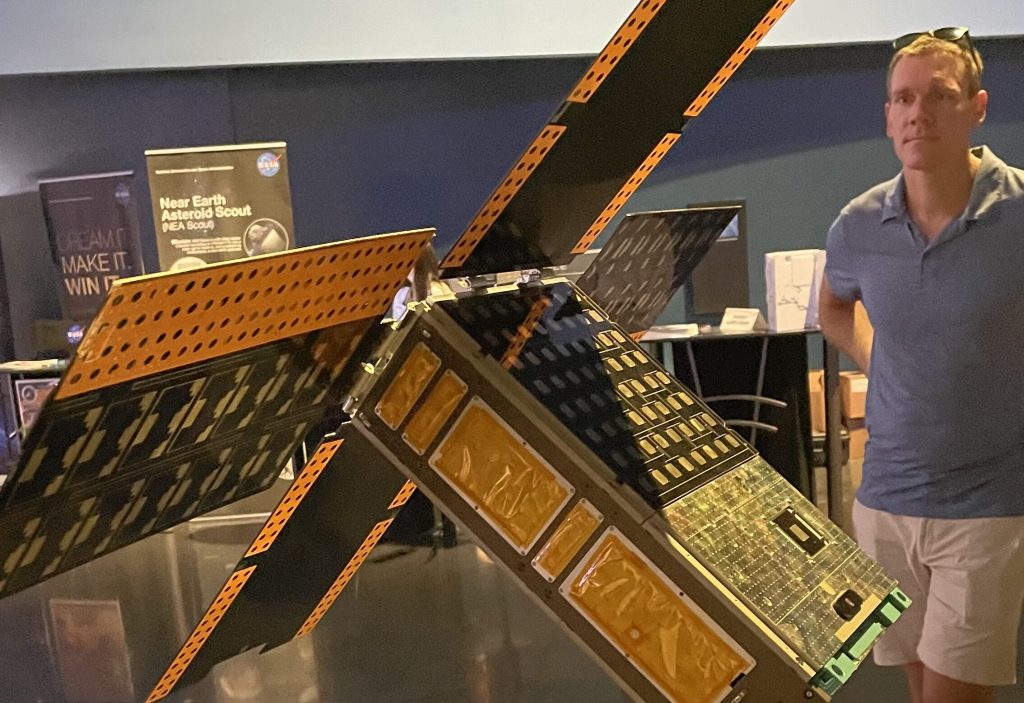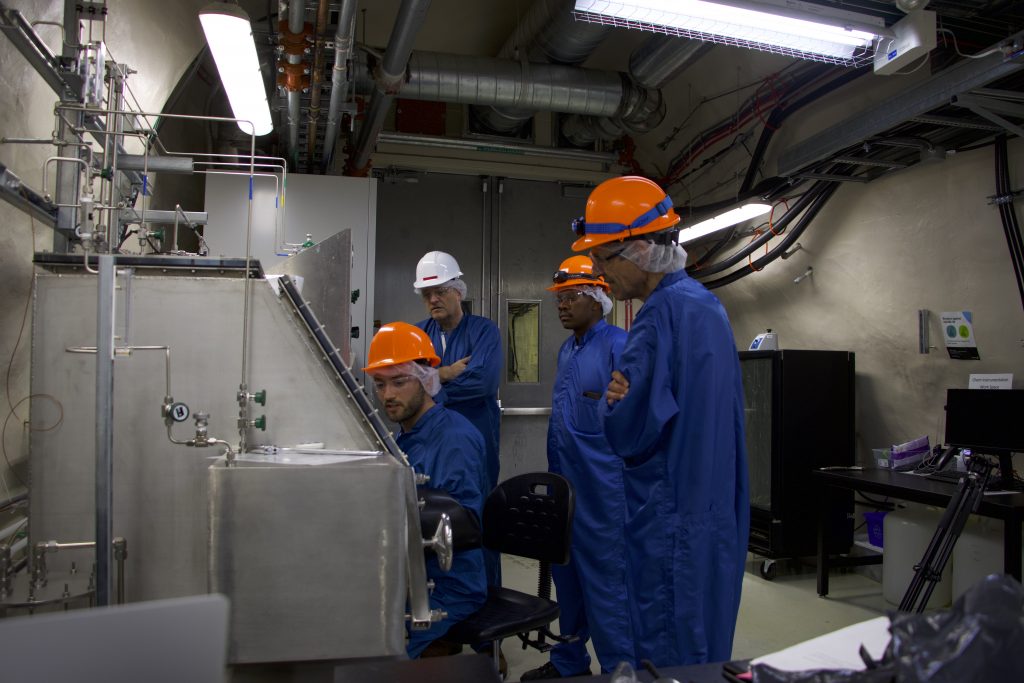SNOLAB science plays a role in the Artemis I mission
From two kilometres below the Earth’s surface, to thousands of kilometres beyond the Earth’s atmosphere, SNOLAB science is helping understand the effects of radiation on biological life; research that is connected to this week’s historic Artemis I launch.
Early in Artemis’s mission to the Moon and back, it will launch a series of secondary payloads called CubeSats. One of those CubeSats, BioSentinal, is a biosensor instrument to detect and measure the impact of space radiation on living organisms over long durations.

The biosensor contains two genetically engineered yeast strains: a wild type of strain that serves as a control for yeast health and “normal” DNA damage repair, and a rad51 deletion strain, which is defective for DNA damage repair, and will therefore undergo alterations to growth and metabolism as it accumulates radiation damage. These changes will be detected by the biosensor payload.
While progress identifying and characterizing biological radiation effects using Earth-based facilities has been significant, no terrestrial source can fully simulate the maximum-radiation environment encountered in deep space.
Similarly, our understanding of the biological effects of minimum-radiation environment is being advanced by researchers from NOSM University in the Life Science Laboratory deep underground at SNOLAB.

Dr. Christopher Thome, Assistant Professor, Medical Science Division at NOSM University in Sudbury, explains that SNOLAB’s contribution to BioSentinal has been designed to complement the Artemis I CubeSat.
“We designed our experiment to match what BioSentinel is doing,” Dr. Thome said.
“Our SNOLAB experiment is technically a standalone experiment. We will be comparing the survival and growth of yeast that have been incubated in SNOLAB relative to our control laboratory at NOSM. But we designed our experiments so that it could also act as a control for BioSentinel.”
Life in space and on the moon and Mars has many challenges, including the genetic damage caused by cosmic radiation. Cosmic radiation comes from the nuclear reactions that power stars like our own sun. The universe is filled with galactic cosmic radiation but on Earth, our atmosphere shields and protects life from the harmful effects. The shielding effects of the atmosphere can be seen at night as light—the Northern Lights—when cosmic radiation interacts with the atmosphere.
“The research is aimed at understanding how living cells can respond and adapt to the harsh radiation environment in outer space,” says Dr. Thome. “These experiments will build our knowledge on the potential risks inherent to future crewed missions to the moon and Mars and help develop new methods for extra-terrestrial protection of living organisms.”
With controls deep underground at SNOLAB, on surface at various sites, in low-Earth orbit on the International Space Station, and now in deep space on the Artemis I CubeSat, we should get a good indication of the biological effects of comic radiation exposure, Dr. Thome said.